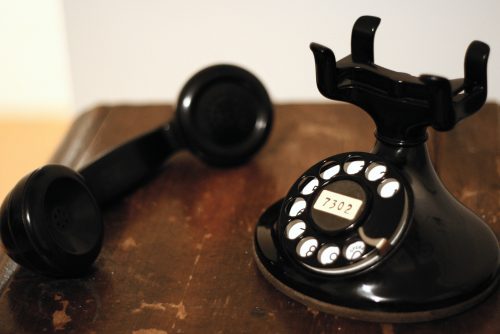Shady direct mail tactics, like crying wolf, have diminishing returns over time.
Sketchy practices are rampant throughout the direct mail industry (as I've noted in the past). Ordinarily it’s shady direct mail firms, not the nonprofits or political groups themselves, that are coming up with these tactics. And they are using these tactics because, on some level, they work. You really can sometimes juice the returns to a mailer by making the package look like a bill, or faking some sort of urgency that isn’t actually the case.
But such tactics, like crying wolf, have diminishing returns over time.
They make the direct mail firm look good by increasing returns in the short run, but fail at bringing in and keeping supporters who are good major donor candidates over a longer timeframe.
The value of a nonprofit direct mail program is in the revenue it drives in over time as new mail donors become consistent annual donors, personally cultivated major donors, and planned giving prospects. The value of donors acquired through direct mail is realized years after they make their first contribution, not in the immediate returns to the initial mailer.
As a fundraiser, you are really shooting yourself in the foot if you pursue tactics that bring in 10% more funds up front, but a lower renewal rate and a lower major donor conversion rate in subsequent years.
So, I’d like to lay out one basic principle: It is unethical to use direct mail tactics that deliberately misrepresent what the mailer is about, or deliberately misrepresent the state of the nonprofit’s finances or programs.
Common examples of unethical mail tactics would include:
1. Deliberately using language reminiscent of an overdue bill, such as sending the mailer from the “finance department” or using the words “FINAL NOTICE” or “URGENT REPLY NEEDED” entirely out of context in an acquisition piece.
2. Using stock photos and fake stories to draw human interest into a letter (this is a common tactic for homeless shelter, which will often put a provocative caption like “Jimmy, hungry, last Thursday night” under a stock photo of a boy who, based on how long I’ve been seeing the same photo, is probably now 42 years old).
3. Lying about the state of the organization’s finances, i.e., “if we don’t raise $25 from each of you now, we’ll have to close our doors” or implying that, say, starving families will be turned away at the door of the food bank if donations do not reach a certain level.
This is not to say that all direct mail tactics are invalid. There are plenty of successful strategies to raise direct mail returns that are perfectly ethical (though one of my favorite, just being honest, seems to be tested rarely).
So let me say that it is ethical to use tactics that increase open rates, average gifts, and response rates when they convey accurate information about the organization and do not leave the impression that they are something other than what they are to a typical recipient. They should communicate the mission and edify the donor rather than mislead. Examples of such ethical mail tactics would include:
1. Using aggressive but clear language such as “MEMBERSHIP EXPIRING” for donors who are actually members of your organization when their membership is actually going to expire, with the organization clearly listed on the envelope so that the recipient is not confused into thinking their power is about to be turned off. Some donors actually appreciate this clarity, because they don’t realize that a membership they do value is indeed about the expire.
2. Using font that is intended to look like it is handwritten to increase the personal feel of the letter. This is not misleading to the average recipient because it is commonly understood, for example, that the CEO doesn’t really hand sign their signature at the bottom of every corporate form letter.
3. Varying the size, color scheme, and length of mailers to get more attention.
4. Teaser text on outer envelopes that entices a recipient based on the mission of the organization or the content of the letter without misleading. Even “open for your special gift” is acceptable if there is a real premium offer at play in the package.
5. Using stories about program beneficiaries that are true, or to the extent that they are altered (say, by changing names to protect anonymity) are clearly explained as such.
6. Talking about the additional good that may be done with a contribution, if it is an accurate representation of the programmatic situation.
7. Creating a sense of urgency based on real facts. For example, “we have until October 30th to raise $50,000, which will be matched by a generous donor” if indeed a generous donor has stepped forward with a matching gift.
In addition to helping everyone at your organization sleep better at night, following these principles of direct mail will also increase the total return to your direct mail program over time.
--
It is my goal to help purpose-driven organizations achieve their fundraising goals, craft clear and compelling communications, and achieve greater influence. Please let me know if and how I can be of help to you, especially if you have questions about direct mail vendors. Feel free to shoot me an email at mgerken@amphil.com or check out our consulting services online at AmPhil.com. We also host ongoing fundraising trainings throughout the year.







Thanks, Matthew, for dealing with this often sleazy subject. It just boils down to: be straight with prospects and donors.